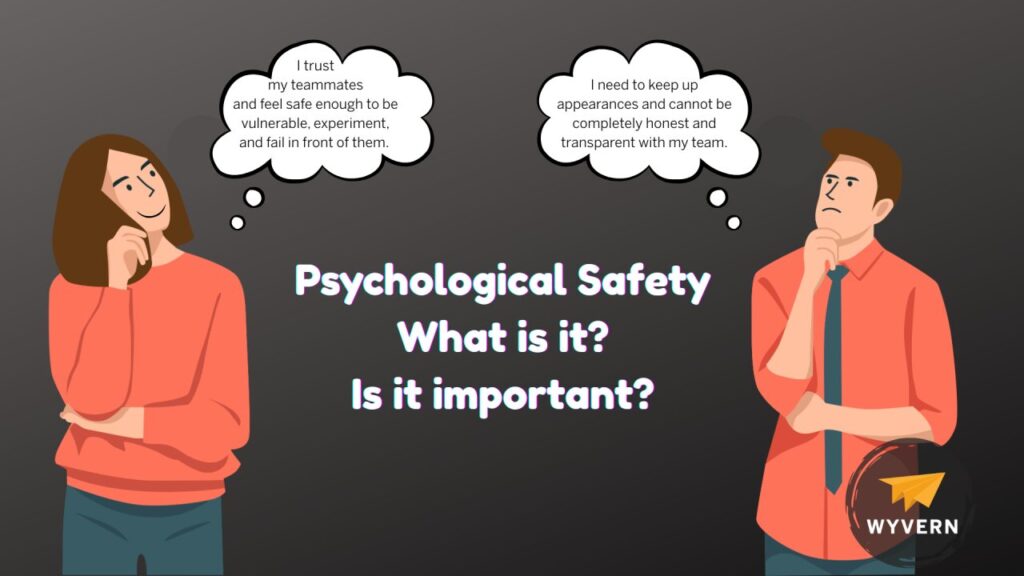Part 1: Understanding Psychological Safety in the Workplace
In today’s dynamic work environment, fostering psychological safety is paramount for cultivating high-performing teams. Psychological safety refers to an individual’s perception of the consequences of taking interpersonal risks in a particular context, such as a workplace. It involves a shared belief that the team is safe for risk-taking, allowing members to speak up, offer ideas, and admit mistakes without fear of embarrassment or retribution.
The Importance of Psychological Safety
Research has shown that psychological safety is a critical factor in determining team effectiveness. When team members feel safe, they are more likely to communicate openly, share diverse perspectives, and collaborate effectively. This environment enhances individual well-being and drives collective performance and innovation.
The Four Stages of Psychological Safety
Psychological safety is developed through four progressive stages, as outlined by Timothy R. Clark:
✓ Stage 1: Inclusion Safety – Team members feel accepted and valued for who they are at this foundational stage. Inclusion safety satisfies the basic human need to belong, ensuring that individuals feel safe to be present and do not fear exclusion. When inclusion safety is established, team members are more likely to engage fully, share their perspectives, and collaborate effectively.
✓ Stage 2: Learner Safety – Once individuals feel included, they seek to grow and develop. Learner safety allows team members to ask questions, experiment, and make mistakes without fear of embarrassment or retribution. This stage fosters an environment where learning is encouraged, and errors are viewed as opportunities for improvement, which is essential for innovation and continuous development.
✓ Stage 3: Contributor Safety – With the confidence gained from learning, individuals are ready to contribute their own ideas and make a difference. Contributor safety ensures team members can use their skills and abilities to contribute meaningfully without fear of being marginalized. This stage empowers individuals to take initiative, assume responsibility, and apply their knowledge effectively.
✓ Stage 4: Challenger Safety – The pinnacle of psychological safety is reached when team members feel secure enough to challenge the status quo. Challenger safety enables individuals to question existing practices, suggest improvements, and advocate for change without fear of punishment or ridicule. This stage promotes innovation and ensures organizations remain adaptive and responsive to evolving challenges.

Benefits of Psychological Safety
✓ Enhanced Innovation: Teams with high psychological safety are more likely to experiment and innovate, as members feel comfortable proposing novel ideas without fear of criticism. Studies have shown that psychological safety significantly improves the likelihood of successful process innovation, as team members feel safe to discuss and implement new ideas.
✓ Improved Employee Engagement: When individuals feel their voices are heard and valued, they are more engaged and committed to their work. Research indicates that psychological safety indirectly affects employee engagement by encouraging open communication and sharing opinions.
✓ Effective Communication: Open dialogue leads to better problem-solving and decision-making processes within the team. In hospital units, for example, members who feel safe reporting mistakes tend to detect more errors, emphasizing the importance of psychological safety for open communication.
✓ Reduced Turnover: A supportive environment contributes to higher job satisfaction, reducing the likelihood of employees seeking opportunities elsewhere.
How WYVERN Can Help
At WYVERN, we understand that psychological safety doesn’t happen by chance—it requires intentional leadership and training. Our Safety Leader Training is designed to equip managers and team leads with the skills to:
✓ Foster a culture of open communication
✓ Encourage team engagement and collaboration
✓ Create an environment where employees feel safe to innovate and challenge ideas
✓ Reduce workplace fear and resistance to change
Investing in Safety Leader Training empowers your organization to build a resilient, high-performing culture where people thrive. WYVERN members are invited to attend our Safety Leader Training annually at no charge*, equipping them with the latest insights and strategies in aerospace safety leadership. (*Organizations can send one member every year at no cost.)
Looking Ahead
In our next installment, we will explore practical strategies for cultivating psychological safety within your team.
Next Week: Implementing Psychological Safety in Your Team
In Part 2, we’ll wrap up this series by discussing how leaders can create an environment where trust, engagement, and innovation thrive.
If you are not subscribed to our weekly newsletters, subscribe now at the bottom of this page. For further resources and guidance on implementing Safety Management Systems, contact WYVERN, THE industry expert. Attend our SMS Training Workshops or ask about our SMS software. Contact us for a FREE SMS demo! Together, we can elevate aerospace safety and create a safer future.
References
Visit our Resource Center for this and other interesting documents:
Delizonna, L. (2017). High-Performing Teams Need Psychological Safety. Here’s How to Create It. Harvard Business Review.
Kutnick, V. (2024). The Four Stages of Psychological Safety. management30.com
Clark, T. R. (2021). The Four Stages of Psychological Safety. In T. R. Clark, The 4 Stages of Psychological Safety: Defining the Path to Inclusion and Innovation (https://psychsafety.com/the-four-stages-of-psychological-safety/).


Share this article on social media!
Follow us on social media!